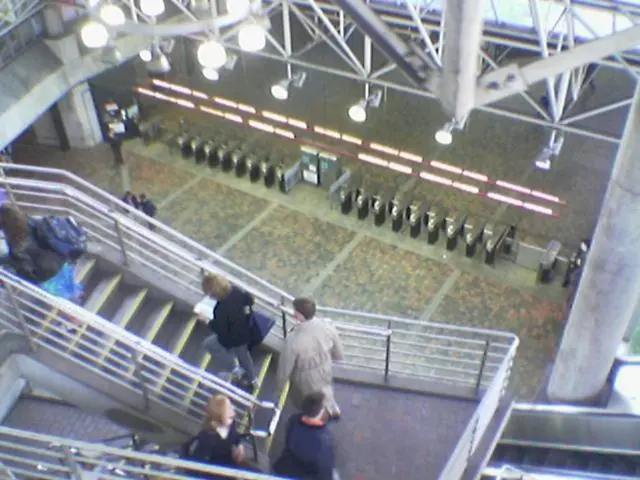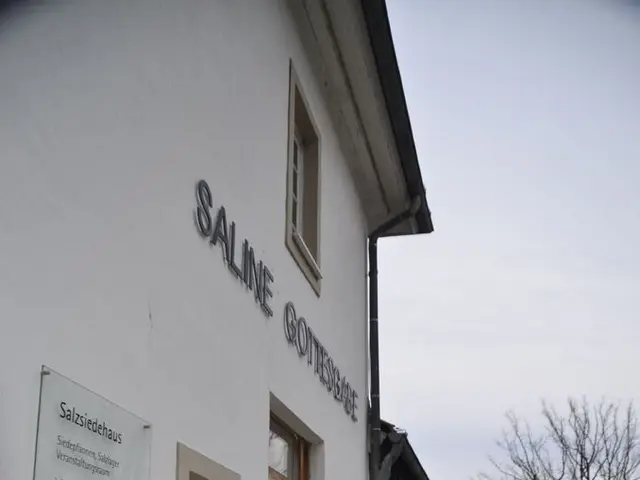Homecoming for Sailor Killed at Pearl Harbor After 80 Years
Years of longing and waiting came to a close for the Galaszewski family as the remains of Stanley, their relative who perished at Pearl Harbor in 1941, were returned home.
Raised by his single mother after his father's demise, Stanley was one of seven siblings who braved the tough times brought on by the Great Depression. Chris, a descendant of Stanley, said, "He joined the navy to send some money back home during the Depression. He was just a sailor 2nd class, and he was 29 when he passed away."
A handwritten letter from Stanley to his girl Eva, which stated, "I think about my family every day," shed light on his tender sentiments for his kin. Little did he know that his words would echo through generations, surviving the test of time.

Pearl Harbor 6 Weeks Later
Left in charge of the USS California, Stanley's ship, the attack on Pearl Harbor, on December 7, 1941, claimed the lives of many. Six weeks prior to the attack, Stanley had penned a letter to his beloved Eva, expressing his admiration for Hawaii's island beauty and modernity, as well as his feelings of security and optimism for the future.
Identifying Unknown Seafarers
The torpedoed USS California, on which Stanley served, yielded the remains of 103 soldiers who lost their lives that fateful day. However, 25 of them could not be identified. Twenty individuals were listed as unclaimed, losing out on the chance of paying their final respects.
The era of forensic anthropology was still in its infancy during the 1940s. Medical professionals and scientists put forth their best efforts in an attempt to identify these fallen soldiers but lacked the technological advancements we have today. Sean Everette, the media relations expert at the POW/MIA Accounting Bureau, commented, "During World War II, the field of forensic anthropology was on the rise. Doctors and scientists did their best to identify these seafarers, but they didn't have the necessary technology back then."
Fast forward to 2018, the POW/MIA Accounting Bureau embarked on yet another mission to identify the USS California's lost crew members after successfully identifying 362 victims from the USS Oklahoma.
The Unraveling of a Mystery
The process of identifying the remains is no easy feat. Anthropologists and forensic experts must painstakingly untangle the jumbled DNA inside chests, determining which strands belong to which individual. Everette explained, "It's like solving a puzzle. Scientists must ascertain which bones belong to whom."
In Stanley's case, DNA samples had been collected from close relatives years prior. With the advancement of technology, the team had an easy time deciphering the DNA code. Everette stated, "We were lucky to find Stanley because we had DNA reference samples from very close family members."
Eva Garrison, Stanley's great-grandmother, passed away in 2002, but her legacy lived on in the hearts and memories of her descendants. Upon learning of the discovery, Deb Conte, a great-niece, was filled with emotion. "The whole process was more emotional than I anticipated because I didn't know him," she shared.
Rebirth of a Legend
Caught between the options of bringing Stanley's remains back to Steubenville, Ohio, or interring him in Hawaii or Arlington National Cemetery, Conte was eerily reminded of her great-grandmother's wishes. "My grandmother always said she wanted him to come home, so bringing him back felt like an honor," she mused.
"On October 31, 2023, we were in Pittsburgh to receive the remains. I was touched that his father's hand was still intact, as he was buried with it 81 years earlier," Conte said.
Back to the Land of the Living
The sky turned a brilliant blue in November, and the rays of the sun reflected off the Sunset Strip as children waved flags and families gathered to welcome a lost legend back home.
The process of bringing Stanley's remains home was an unforgettable one. Lord, who served alongside Stanley, welcomed him back with open arms, "It felt good to see him come home," he said.
A soldier laid a folded American flag in the hands of Stanley's great-nephew, symbolizing a fond farewell and the end of an arduous journey.
As the sun dipped below the horizon, the family stood in awe, grateful for the opportunity to bring Stanley back to his hometown for a final, well-deserved homecoming. In the words of Conte, "I can only imagine how grateful my great-grandmother would have been if she had known he was coming home."
Related Stories
Source: edition.cnn.com
Enrichment Data:
The procedure of retrieving and identifying the remains of Stanley Galaszewski followed a series of advanced forensic techniques and historical inquiries. This general overview highlights the proceedings:
- The Hunt for Remains: In recent times, organizations such as the U.S. Navy have undertaken extensive searches and excavations of sites like the USS Oklahoma to retrieve remains of sailors who perished in Pearl Harbor.
- DNA Analysis: DNA samples from living relatives serve as a crucial tool for identification. They are extracted from remains and then compared to DNA samples from family members, allowing for identification based on genetic markers.
- Forensic Anthropology: Experts in forensic anthropology study skeletal remains to detect characteristics, such as age, sex, and stature. By analyzing this information, they can sometimes make connections with historical records or dental records.
- Historical Records: The recovery of historical records – including military and personal documents – plays a pivotal role in the identification process. Information from these records can potentially serve as a match for recovered remains.
- Dental Records: If dental records are accessible, they can serve as a unique identifier. Fillings, crowns, and other dental treatments can reveal distinct characteristics that can aid in the identification process.
- The Final Farewell: Once the identification is confirmed, the remains are returned to the family for a proper burial. This usually takes place in a national cemetery or another chosen location.
Utilizing these methods, investigators have recovered and identified numerous sailors who lost their lives at Pearl Harbor, returning a sense of closure to their families. In the specific case of Stanley Galaszewski, it's essential to access the original sources to gather details regarding the circumstances of his identification and return.








